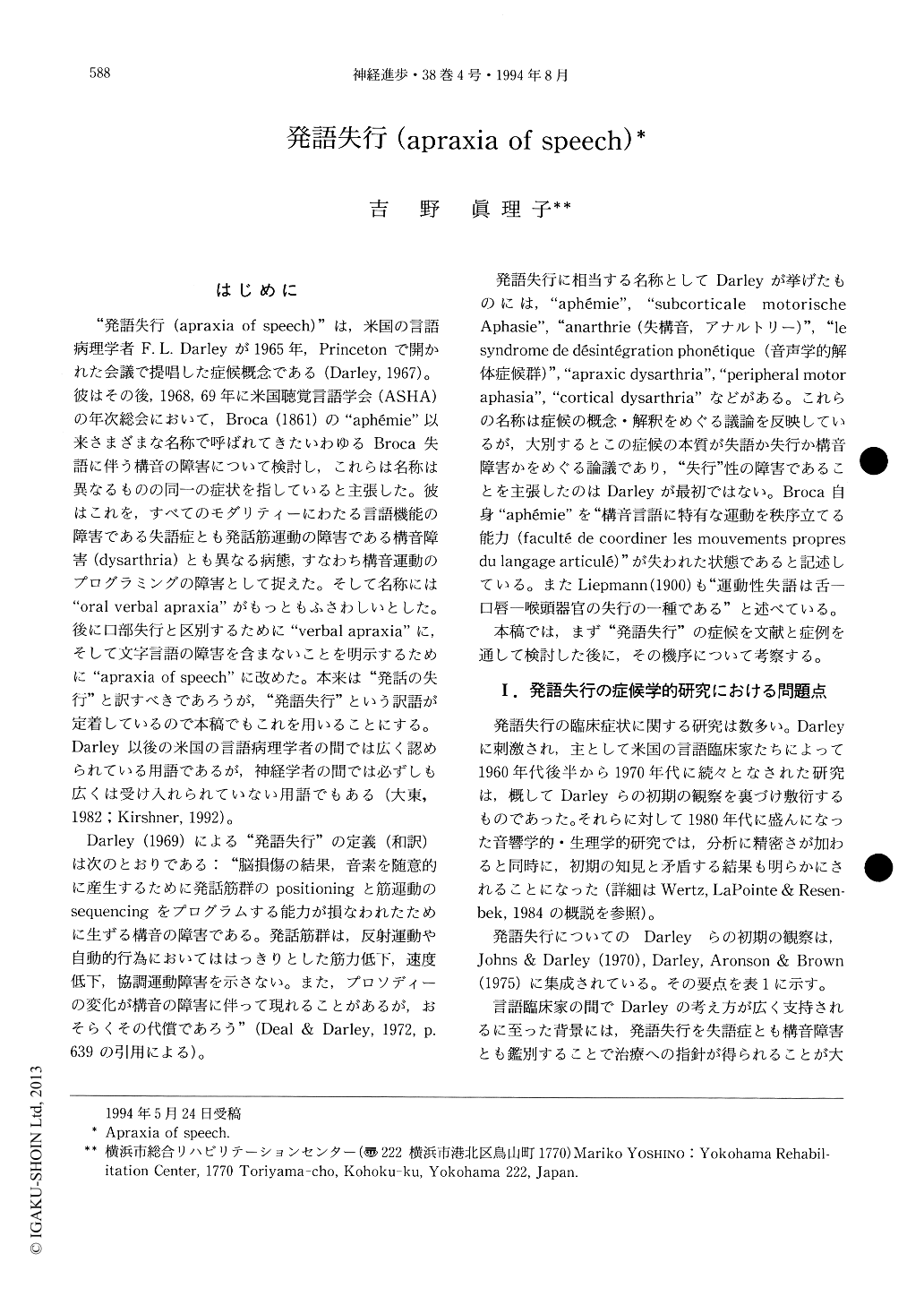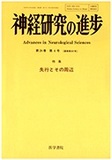Japanese
English
- 有料閲覧
- Abstract 文献概要
- 1ページ目 Look Inside
はじめに
“発語失行(apraxia of speech)”は,米国の言語病理学者F. L. Darleyが1965年,Princetonで開かれた会議で提唱した症候概念である(Darley, 1967)。彼はその後,1968,69年に米国聴覚言語学会(ASHA)の年次総会において,Broca(1861)の“aphémie”以来さまざまな名称で呼ばれてきたいわゆるBroca失語に伴う構音の障害について検討し,これらは名称は異なるものの同一の症状を指していると主張した。彼はこれを,すべてのモダリティーにわたる言語機能の障害である失語症とも発話筋運動の障害である構音障害(dysarthria)とも異なる病態,すなわち構音運動のプログラミングの障害として捉えた。そして名称には“oral verbal apraxia”がもっともふさわしいとした。後に口部失行と区別するために“verbal apraxia”に,そして文字言語の障害を含まないことを明示するために“apraxia of speech”に改めた。本来は“発話の失行”と訳すべきであろうが,“発語失行”という訳語が定着しているので本稿でもこれを用いることにする。Darley以後の米国の言語病理学者の間では広く認められている用語であるが,神経学者の間では必ずしも広くは受け入れられていない用語でもある(大東,1982;Kirshner, 1992)。
“Apraxia of speech (AOS)” is the disorder defined by F. L. Darley in 1969 as “an articulatory disorder resulting from impairment, as a result of brain damage, of the capacity to program the positioning of speech musculature and the sequencing of muscle movements for the volitional production of phonemes”. In Darley's assertion, it typically occurs with Broca's aphasia, but it can be differentiated from either aphasia or dysarthrias.
In 1970s, a lot of descriptive studies on apraxia of speech appeared, but almost every one was inadequate for two reasons.

Copyright © 1994, Igaku-Shoin Ltd. All rights reserved.


